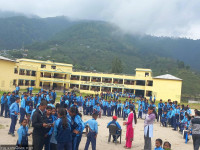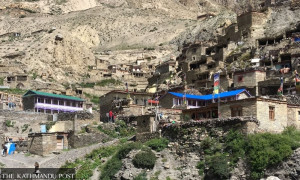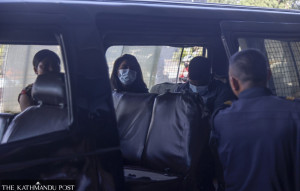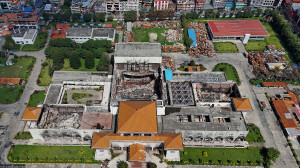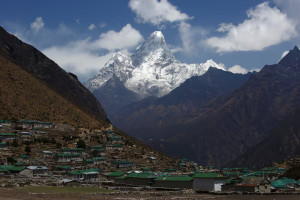National
Children are starving in Bajhang
Last month, Sabita Nepali was rushed to the local health centre after her condition continued to worsen. The eight-month old infant, who weighed three kilos at birth, was recorded at two-and-a-half kilos when she was brought to the Deura Primary Health Centre in Bajhang.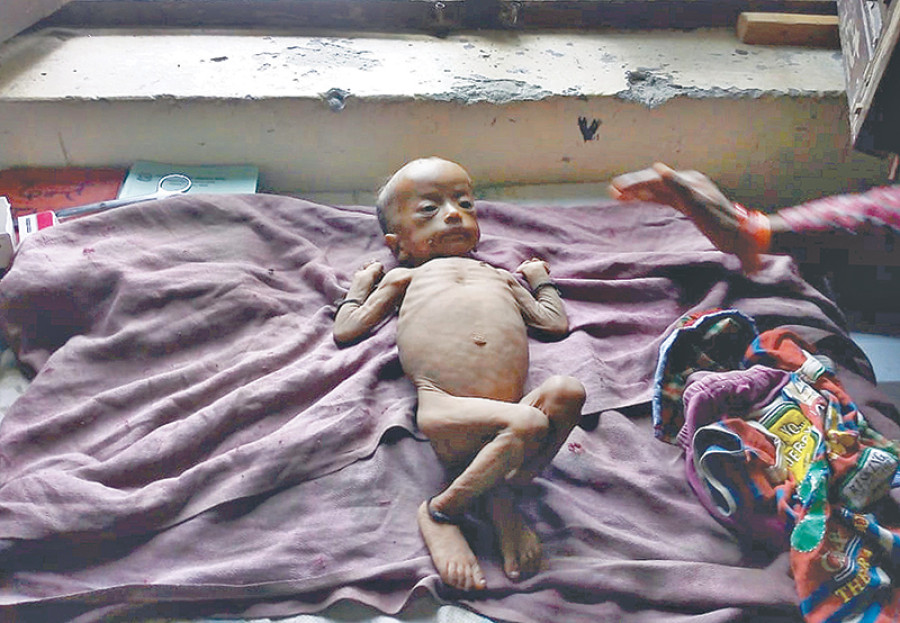
Basant Pratap Singh
Last month, Sabita Nepali was rushed to the local health centre after her condition continued to worsen. The eight-month old infant, who weighed three kilos at birth, was recorded at two-and-a-half kilos when she was brought to the Deura Primary Health Centre in Bajhang.
When medical workers at the centre examined Sabita, they knew she needed more than just a check-up—and asked her parents to take her to the Nutrition Rehabilitation Home at the Seti Regional Hospital in Dhangadhi, about eight hours by bus.
Sabita is among nearly 1,500 children under the age of five who are acutely malnourished in Bajhang, a remote district in the far-western region which has been grappling with food security issues in recent years.
District health officials said as many as 4,000 children have been diagnosed with severe malnutrition in Bajhang, and it is becoming difficult by the day to save children at the last minute. According to a screening by the Integrated Management of Acute Malnutrition of children at all 12 local federal units in the district, at least four girls died of acute malnutrition last year. Parents say lack of health awareness and deeply-rooted superstitions in the region have exacerbated the issue. “We thought some evil spirit had made our daughter ill, so we took her to a shaman,” said Harku Nepali, the mother. “We have incurred a debt of 20,000 rupees just taking her to faith healers.”
Harku, a daily wage worker, said the family had decided not to visit a hospital because of the exorbitant costs for treatment.
Government-run health facilities in the region treat malnourished children free of cost but Harku said she had no idea about it.
“The girl’s mother did not even have the bus fare, so we gave her some money to travel to Dhangadhi,” said Brinja Pun, assistant health worker at the centre.
Bajhang has an estimated 22,000 children. Hemanta Shahi, district coordinator of Multi-Sectoral Nutrition Plan under the District Coordination Committee, told the Post that poverty, lack of public health awareness, and gender discrimination are the main causes of malnutrition. What’s more, poor sanitation, lack of proper care, and unavailability of nutritious varieties of meals have made the situation worse.
Bajhang has been facing a perennial food shortage in recent years, leaving mostly low income families to suffer. According to the District Agricultural Development Office, there is a shortfall of about 11,000 metric ton food every year. Around Rs800 million was allocated through various NGOs and government agencies in the fiscal year 2017-18 to control malnutrition in the district. Data from government offices show that half of the budget was spent on awareness campaigns.
By the numbers
- Approximately 36 percent of Nepali children suffer from stunting, 10 percent from wasting, and 53 percent from anaemia
- Forty-one percent of women of reproductive age suffer from anaemia and 17 percent from long-term energy deficiencies
-The government aims to reduce the rate of stunting from 36 percent to 24 percent by the year 2025 and to 14 percent by 2030
Source: UNICEF




 17.12°C Kathmandu
17.12°C Kathmandu




